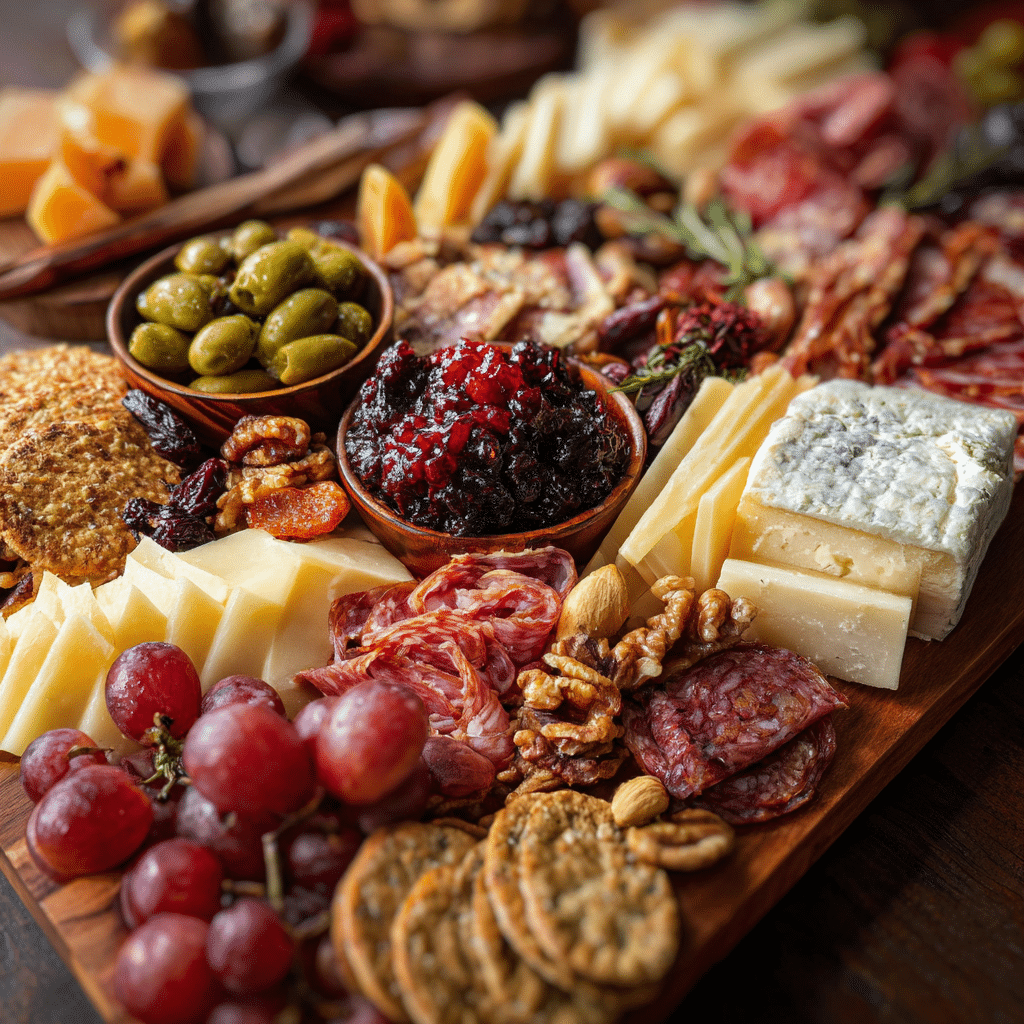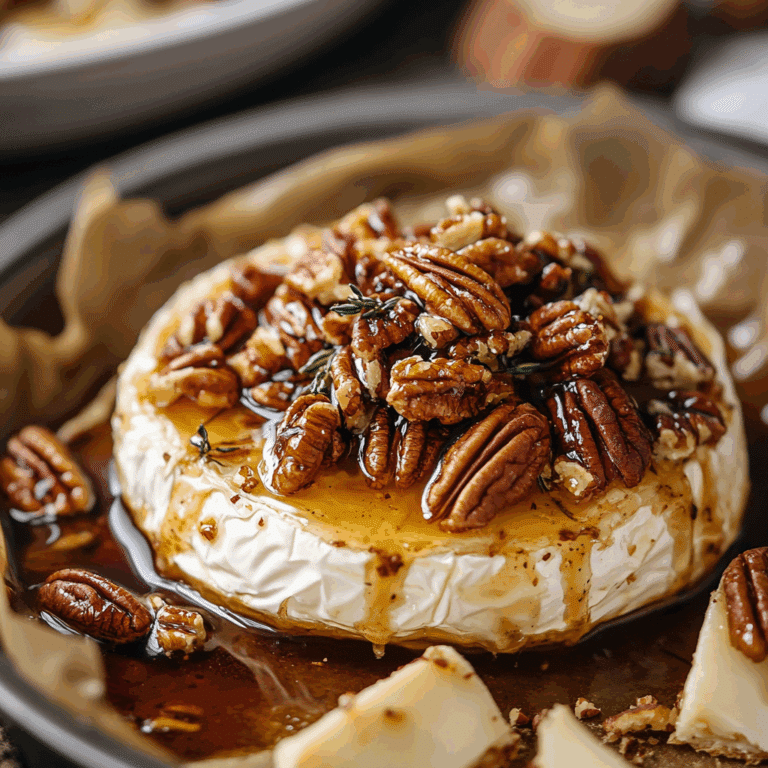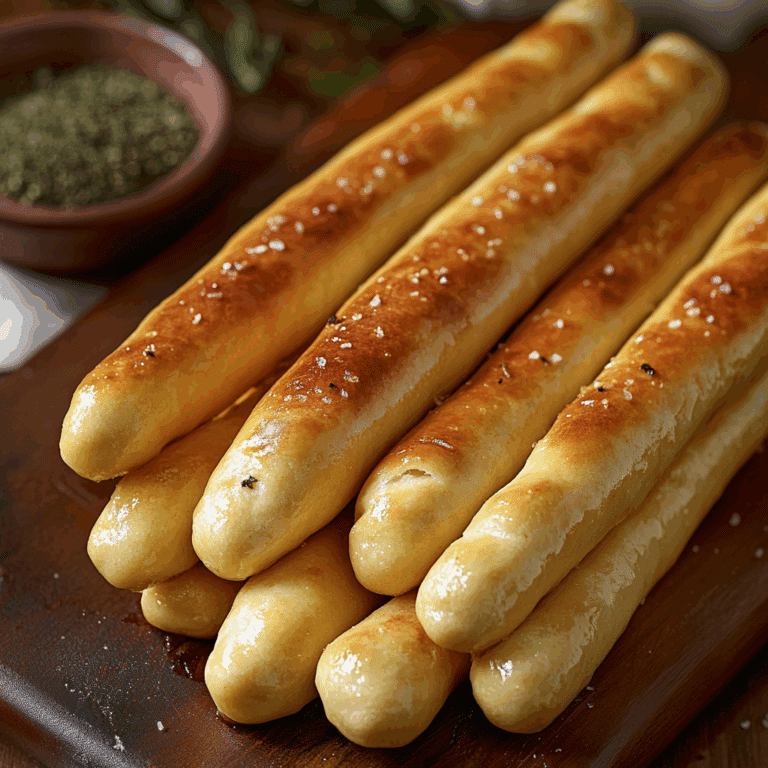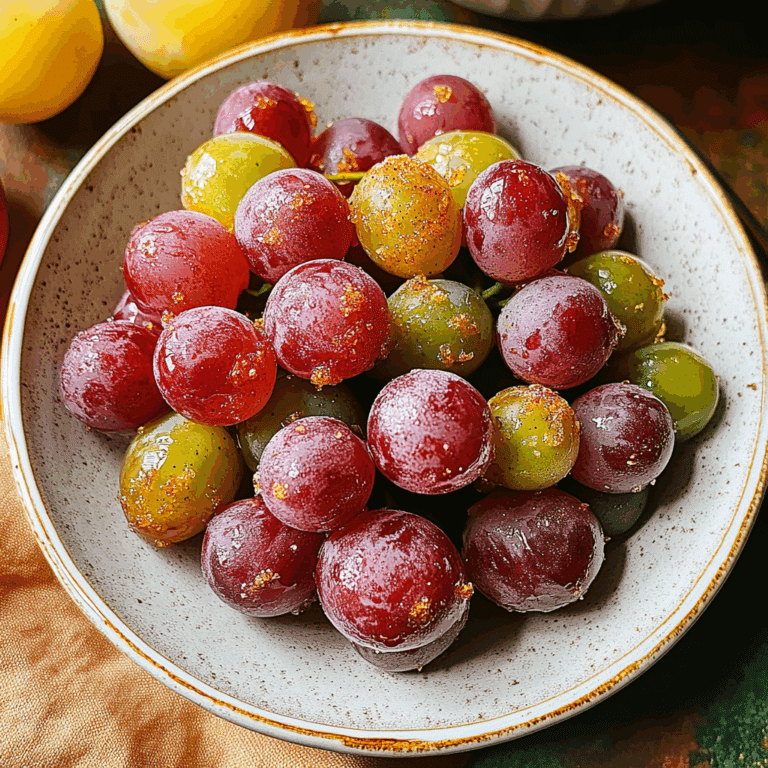Artisan Charcuterie Board

If you’re looking to impress your guests with a dish that’s as visually stunning as it is delicious, then creating the perfect Artisan Charcuterie Board is your new go-to skill. This crowd-pleaser combines a rich variety of textures and flavors, artfully arranged to delight every palate. An Artisan Charcuterie Board features an enticing selection of cured meats, cheeses, fresh and dried fruits, nuts, and other delectable accompaniments that make for a sophisticated and memorable snacking experience.
Why You’ll Love This Recipe
- Effortless Elegance: The Artisan Charcuterie Board looks professionally assembled with minimal effort, perfect for casual or formal gatherings.
- Flavor Diversity: Balances savory, sweet, creamy, and crunchy elements that please every taste bud in the room.
- Customizable Creativity: Easily adapts to dietary preferences and seasonal ingredients, making it your ultimate crowd-pleaser.
- Great for Any Occasion: Whether it’s a celebration or a quiet dinner, this board adds charm and style.
- Easy to Assemble: No cooking required—just curate your favorite quality ingredients and plate them beautifully.
Ingredients You’ll Need
The secret to a standout Artisan Charcuterie Board lies in choosing simple but carefully selected ingredients. Each component adds unique taste, texture, or color to keep the board exciting and balanced.
- Cured Meats: Include a variety such as prosciutto, salami, and chorizo for smoky, spicy, and savory flavors.
- Cheeses: Pick 3-5 kinds like a creamy brie, sharp cheddar, tangy blue cheese, and nutty gouda.
- Fresh Fruits: Grapes, figs, or sliced apples provide juicy sweetness and freshness.
- Dried Fruits: Apricots, cranberries, or dates offer chewy texture and concentrated flavor.
- Crackers and Bread: Mix rustic baguette slices with assorted crackers for crunch and base layering.
- Nuts: Almonds, walnuts, or pistachios add satisfying crunch and earthiness.
- Condiments: Honey, mustard, and fruit preserves contribute sweet and tangy notes to complement the meats and cheeses.
- Pickled Items: Cornichons, olives, or pickled onions brighten the board with zingy acidity.
Variations for Artisan Charcuterie Board
One of the best parts of creating an Artisan Charcuterie Board is how easy it is to tailor it to your preference, dietary needs, or ingredient availability. Feel free to experiment and make it uniquely yours.
- Vegetarian Option: Swap meats for grilled vegetables, marinated artichokes, and plant-based cheeses.
- Seasonal Twist: Incorporate seasonal fruits and nuts, like pears and chestnuts in fall or berries and pistachios in summer.
- International Flair: Add specialty items like Spanish jamón, French cheeses, or Italian olives for a global taste experience.
- Gluten-Free Version: Choose gluten-free crackers and breads to accommodate dietary restrictions easily.
- Spicy Kick: Include spicy meats or add a harissa dip for guests who like heat.

How to Make Artisan Charcuterie Board
Step 1: Choose Your Board
Select a large wooden or marble serving board that gives you plenty of space to display your items beautifully and keep components from mixing.
Step 2: Start with the Cheeses
Arrange your cheeses evenly around the board, slicing some in advance and leaving others whole with a cheese knife nearby for guests to cut.
Step 3: Add the Meats
Fold or roll sliced cured meats, placing them near cheeses to encourage delicious pairings while maintaining attractive presentation.
Step 4: Layer Fruits and Nuts
Fill in gaps with fresh and dried fruits, as well as clusters of nuts for added texture and pops of color throughout the board.
Step 5: Incorporate Crackers, Bread, and Condiments
Place crackers and bread strategically for easy access, alongside small bowls of honey, mustards, and preserves.
Step 6: Add Pickled and Fresh Garnishes
Finish by layering pickled vegetables, olives, or fresh herbs to add acidity and freshness that brighten the entire board.
Pro Tips for Making Artisan Charcuterie Board
- Balance Flavors: Mix mild and strong cheeses, spicy and sweet meats, and fresh and pickled items for dynamic taste.
- Use Odd Numbers: Arrange items in groups of three or five to create visually appealing clusters.
- Vary Textures: Combine creamy, crunchy, chewy, and smooth elements for an engaging mouthfeel.
- Color Coordination: Incorporate vibrant fruits and garnishes to make the board pop with color.
- Label Ingredients: Use small tags to identify cheeses or meats for guests who may have allergies or preferences.
How to Serve Artisan Charcuterie Board
Garnishes
Add fresh herbs like rosemary or thyme sprigs to infuse subtle aromas and enhance presentation. Small edible flowers can also add a whimsical touch to your board.
Side Dishes
Pair the board with light salads, crusty baguettes, or a crisp green vegetable crudité to round out the flavors and add freshness.
Creative Ways to Present
Try serving on a slate slab, tiered wooden trays, or inside hollowed-out bread bowls. Incorporate unique serving tools, like cheese forks and honey dippers, to elevate the experience.
Make Ahead and Storage
Storing Leftovers
Wrap leftover meats and cheeses tightly in parchment paper or plastic wrap and refrigerate in airtight containers to maintain freshness for up to 3 days.
Freezing
Freezing is not recommended for the board as a whole, but certain cured meats and hard cheeses can be frozen separately and thawed gently for later use.
Reheating
An Artisan Charcuterie Board is best enjoyed cold or room temperature, so reheating is generally unnecessary and can alter flavors or textures.
FAQs
What types of meat should I include on an Artisan Charcuterie Board?
Choose a variety of cured meats like prosciutto, salami, chorizo, and soppressata to offer a range of textures and flavors from mild to spicy.
How do I pair cheeses and meats effectively?
Pair milder cheeses with spicier meats and stronger cheeses with gentler meats to balance and enhance flavors harmoniously.
Can I make an Artisan Charcuterie Board for a large crowd?
Absolutely! Simply multiply ingredient quantities and use multiple boards or larger platters to accommodate gatherings of any size.
Are there vegetarian or vegan options available?
Yes! Use plant-based cheeses, marinated vegetables, nuts, and gluten-free crackers to create a vibrant vegetarian or vegan version just as visually appealing and tasty.
How far in advance can I prepare an Artisan Charcuterie Board?
You can assemble most of the board components a few hours ahead, but wait to add fresh fruits or herbs just before serving to keep everything looking and tasting fresh.
Final Thoughts
Creating the perfect Artisan Charcuterie Board is a joyful journey of mixing flavors and textures that your guests will adore. With a bit of creativity and careful selection, your board will not only tantalize taste buds but also become the centerpiece of any gathering. Go ahead, gather your favorite ingredients, have fun assembling, and watch your Artisan Charcuterie Board steal the spotlight!
Related Posts
PrintArtisan Charcuterie Board
Create a visually stunning and delicious Artisan Charcuterie Board perfect for any occasion. This no-cook appetizer features a balanced variety of cured meats, cheeses, fresh and dried fruits, nuts, crackers, pickled items, and condiments. Easily customizable for dietary preferences, it offers effortless elegance and diverse flavors that satisfy every palate.
- Prep Time: 15 minutes
- Cook Time: 0 minutes
- Total Time: 15 minutes
- Yield: Serves 6-8 people
- Category: Appetizers
- Method: No cooking required
- Cuisine: International
- Diet: Gluten Free (with gluten free crackers and bread)
Ingredients
Cured Meats
- Prosciutto (sliced, amount as desired)
- Salami (sliced, amount as desired)
- Chorizo (sliced, amount as desired)
Cheeses
- Brie (creamy, 1–2 wedges)
- Cheddar (sharp, sliced or cubed, 1–2 wedges)
- Blue Cheese (tangy, small wedge)
- Gouda (nutty, sliced, 1 wedge)
Fresh Fruits
- Grapes (1 bunch)
- Figs (4–6 fresh figs, halved)
- Sliced Apples (1 apple, thinly sliced)
Dried Fruits
- Apricots (a handful)
- Cranberries (a handful)
- Dates (a handful, pitted)
Crackers and Bread
- Rustic Baguette slices (1 baguette, sliced)
- Assorted Crackers (1 box or assortment)
Nuts
- Almonds (a handful)
- Walnuts (a handful)
- Pistachios (a handful)
Condiments
- Honey (small bowl)
- Mustard (small bowl)
- Fruit Preserves (small bowl)
Pickled Items
- Cornichons (small bowl)
- Olives (small bowl)
- Pickled Onions (small bowl)
Fresh Garnishes
- Fresh herbs (rosemary, thyme sprigs)
- Optional: small edible flowers for decoration
Instructions
- Choose Your Board: Select a large wooden or marble serving board that provides plenty of space to display all items beautifully and keep components separated.
- Start with the Cheeses: Arrange cheeses evenly around the board, slicing some beforehand and leaving others whole with a cheese knife nearby for guests to cut.
- Add the Meats: Fold or roll slices of cured meats such as prosciutto, salami, and chorizo, placing them near cheeses to highlight delicious pairings and maintain attractive presentation.
- Layer Fruits and Nuts: Fill the gaps with clusters of fresh fruits like grapes and figs, dried fruits such as apricots and cranberries, and handfuls of nuts for varying textures and vibrant color pops.
- Incorporate Crackers, Bread, and Condiments: Strategically position rustic baguette slices and assorted crackers for easy access alongside small bowls of honey, mustard, and fruit preserves to complement the board.
- Add Pickled and Fresh Garnishes: Finish the board by layering pickled vegetables, olives, pickled onions, and fresh herb sprigs to add acidity and freshness that brighten and balance the entire presentation.
Notes
- Balance Flavors: Mix mild and strong cheeses, spicy and sweet meats, and fresh and pickled items for dynamic taste contrasts.
- Use Odd Numbers: Arrange items in groups of three or five to create visually appealing clusters and dynamic composition.
- Vary Textures: Combine creamy, crunchy, chewy, and smooth elements to engage different mouthfeels.
- Color Coordination: Incorporate vibrant fruits and garnishes to make the board pop with an attractive color palette.
- Label Ingredients: Use small tags or labels to identify cheeses and meats, accommodating guests with allergies or preferences.
- Storage: Wrap leftovers tightly in parchment or plastic wrap, refrigerate in airtight containers for up to 3 days.
- Make Ahead: Assemble components a few hours ahead but add fresh fruits and herbs just before serving to retain freshness.
- Freezing: Not recommended for assembled board; freeze cured meats and hard cheeses separately if needed.
Nutrition
- Serving Size: 1/8 of board
- Calories: 250-350 kcal (estimate depending on selections)
- Sugar: 8g (from fruits and preserves)
- Sodium: 450mg (varies with cured meats and pickles)
- Fat: 20g
- Saturated Fat: 8g
- Unsaturated Fat: 10g
- Trans Fat: 0g
- Carbohydrates: 15g
- Fiber: 3g
- Protein: 12g
- Cholesterol: 30mg
Keywords: charcuterie board, appetizer, party platter, no cook, cheese board, cured meats, fancy snack, gluten free option, vegetarian variation







